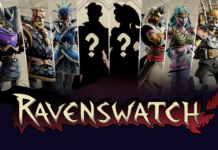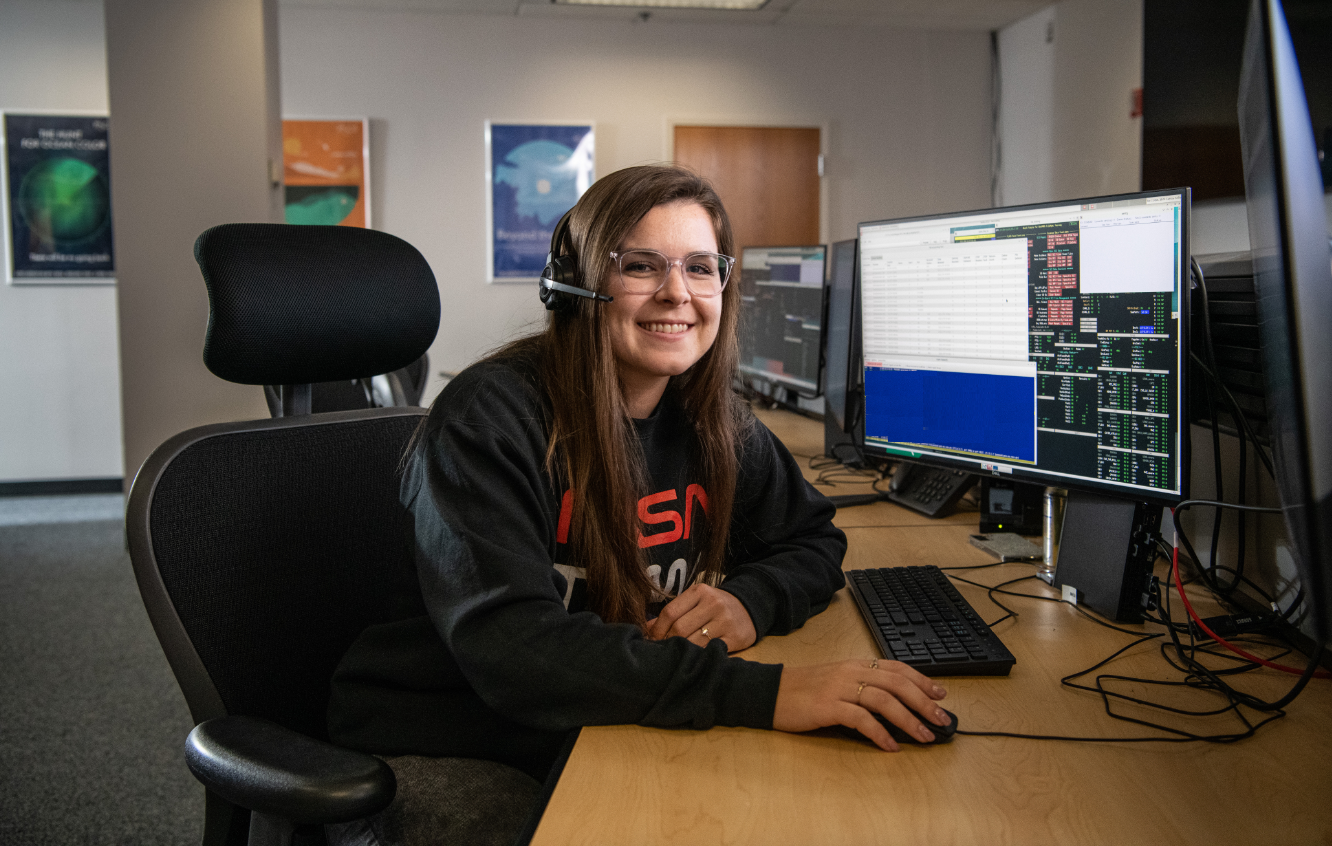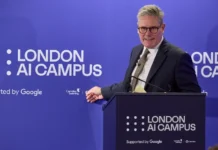Carissa Arillo: Pioneering Flight Operations for NASA’s PACE Mission
Carissa Arillo, a highly skilled flight operations engineer, has played a crucial role in ensuring the successful prelaunch testing of one of the key instruments aboard NASA’s PACE (Phytoplankton, Aerosol, Cloud, and Ecosystem) mission. Her dedication to documenting the intricate details of this process has provided the flight team with a robust manual, essential for maintaining the satellite’s operational health throughout its mission in space.
Meet Carissa Arillo
Name: Carissa M. Arillo
Job Title: Flight Operations Engineer
Organization: Environmental Test Engineering and Integration Branch (Code 549), NASA Goddard Space Flight Center
Carissa’s Role at NASA Goddard
Carissa Arillo is tasked with developing pre-launch testing procedures for the HARP-2 instrument on the PACE mission. HARP-2, or the Hyper-Angular Rainbow Polarimeter, is a sophisticated tool designed to capture wide-angle images of aerosol particles and clouds, along with terrestrial and aquatic surface characteristics. Her work involves crafting meticulous flight operations routines and contingency plans that will guide the satellite post-launch. The challenge lies in devising protocols that ensure the observatory’s smooth operation in space for the entire mission duration, allowing the flight operations team to manage a seamless transition when the mission is handed over.
Educational Background
Carissa earned her Bachelor of Science degree in mechanical engineering from the University of Maryland, College Park, in 2019. She is currently furthering her education by pursuing a master’s degree in robotics at the same institution.
Journey to Becoming an Engineer
Carissa’s fascination with assembling components and understanding their mechanics naturally led her to a career in engineering. Her passion for coding and robotics was sparked upon joining NASA Goddard, where she found herself drawn to the intricacies of these fields.
Pathway to NASA Goddard
After completing her undergraduate studies, Carissa worked with General Electric Aviation, focusing on operations management for aircraft engine manufacturing. When she learned of an opportunity at NASA Goddard, she applied and secured her current role, marking a significant milestone in her career.
Developing Pre-launch Test Procedures for HARP-2
Carissa’s role in developing pre-launch test procedures involved close collaboration with the instrument’s manufacturing team from the University of Maryland, Baltimore County. Through constant communication, they identified key functionalities to verify during each test. This collaborative effort resulted in the creation of comprehensive performance tests, forming the baseline for the prelaunch test campaign. These environmental tests include evaluations of vibration, thermal extremes, acoustic conditions, and radio frequency compatibility to ensure that all subsystems operate harmoniously without interference.
Crafting Flight Operations Procedures
In developing flight operations procedures, Carissa focuses on safely operating the instrument to meet the science team’s objectives. Given the limited communication windows with the instrument—around five to ten minutes every few hours—it’s crucial to have robust procedures in place. Anomalies are addressed by reviewing historical data and consulting contingency procedures, a failure review board, and the instrument manufacturer to devise a recovery plan. The outcome is a comprehensive manual that guides the mission and evolves as needed, akin to an owner’s manual that comes with a new car.
Contributions to the Flight Operations Team
As part of the flight operations team, Carissa plays a vital role in running the Mission Operations Center (MOC) for PACE. While her expertise is centered on the HARP-2 instrument, she also contributes to various supporting functions within the MOC. One of her significant contributions includes developing procedures to automate ground station communications with PACE. These ground stations, strategically located worldwide, facilitate brief communication sessions with the spacecraft, ensuring standard operations are maintained even in the absence of personnel in the MOC.
Reflections on Career Beginnings
Carissa expresses immense gratitude for being part of such an extraordinary mission early in her career. Despite occasionally feeling overwhelmed, she draws support from her experienced colleagues and her academic pursuits in robotics, which equip her with essential skills. She acknowledges the flight operations and integration teams for their immense experience and support, expressing deep appreciation for the opportunity to contribute to the mission’s prelaunch, launch, and post-launch phases.
Engineering Inspirations and Personal Interests
Carissa finds inspiration in biographical films that depict the lives of influential figures, such as "Hidden Figures," which highlights the achievements of three African-American mathematicians at NASA. Outside of her professional endeavors, she enjoys beach outings and cherishing moments with family and friends. Her favorite author, Kristen Hannah, captivates her with compelling storytelling.
Future Aspirations
Looking ahead, Carissa envisions herself working on another groundbreaking mission at Goddard that will unveil unprecedented scientific discoveries. She is driven by the prospect of contributing to advancements that expand our understanding of the universe.
Conclusion
Carissa Arillo’s journey as a flight operations engineer at NASA Goddard exemplifies dedication, collaboration, and a passion for exploration. Her contributions to the PACE mission, particularly concerning the HARP-2 instrument, underscore the importance of meticulous planning and teamwork in ensuring mission success. As she continues to grow in her career, Carissa remains committed to pushing the boundaries of space exploration and inspiring future generations of engineers.
For more insights into the diverse and talented workforce at NASA Goddard, visit NASA’s Goddard Space Flight Center.
For more Information, Refer to this article.



































